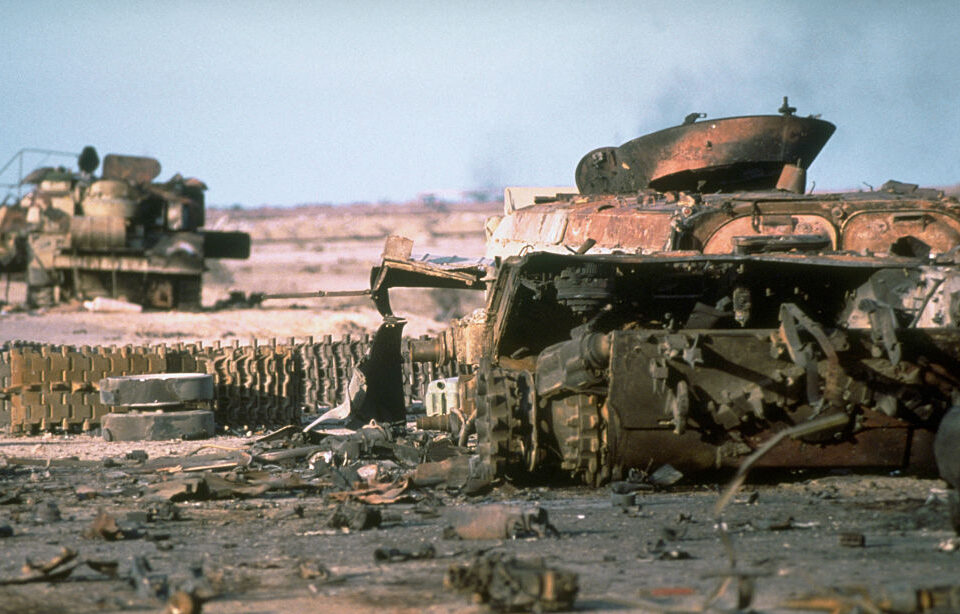In the early 1990s, warfare was largely about air superiority, as was shown in the Gulf War. While the tank had once been the king of the battlefield, its importance and use had declined. That doesn’t mean, however, that its utility had ended. During the Battle of Kuwait International Airport in February 1991, the armored vehicle played a large and important role.
Iraq invades Kuwait
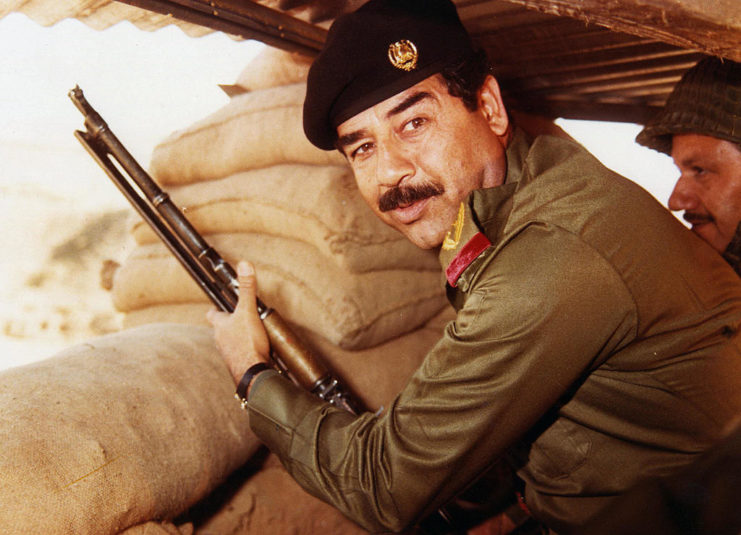
In August 1990, Iraq invaded the free nation of Kuwait. There were a number of reasons as to why, the first of which was the crippling debt Iraq was in as a result of the Iran-Iraq War. According to official estimates, the country owed Kuwait around $14 billion US, which it had borrowed to finance its fight against Iran. Additionally, Iraqi President Saddam Hussein had accused Kuwait of stealing oil from the oil field that sat along the Iraq-Kuwait border.
The invasion occurred rapidly; within two days, the Iraqi forces had taken control. Condemnation from the United Nations (UN) came just as swiftly. Economic sanctions were levied, and US President George H.W. Bush created a coalition in support of Kuwait, which included the United Kingdom and Egypt, among a number of other nations. Saudi Arabia also covered a large percentage of the war costs.
Operation Desert Storm
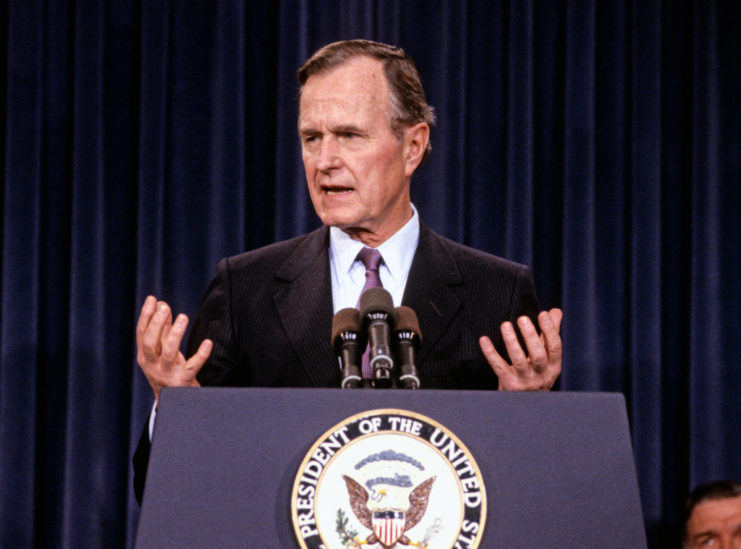
At first, the coalition’s mission took place in the air. From January 17 to February 23, 1991, the US, UK, Canada, France, Saudi Arabia and Italy carried out bombings over both Kuwait and Iraq. The campaign was considered a success. At the conclusion of air campaign, the fighting moved to the ground in Kuwait.
Kuwait International Airport was an important strategic location to hold during the conflict. The Iraqis had initially taken control of the airfield during their initial invasion and the US-led coalition was determined to take it back. Once the fighting moved to the ground, the airport was a natural place for a battle.
The Battle of Kuwait International Airport featured many participants
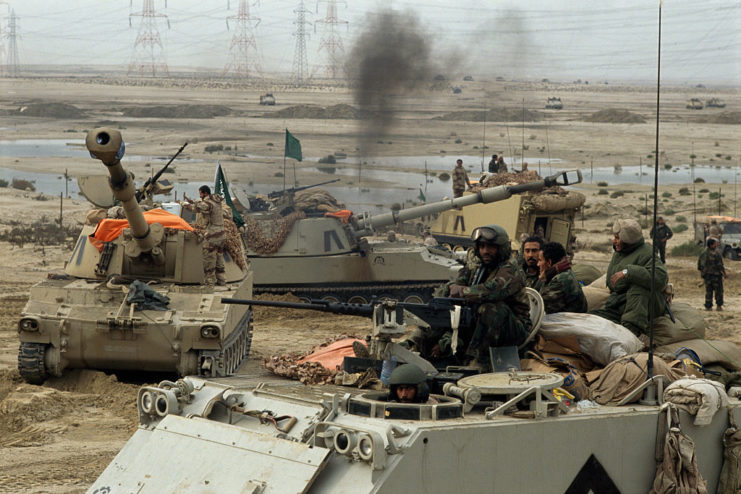
The Battle of Kuwait International Airport occurred on February 27, 1991, and it’s famed for the sheer number of servicemen who participated. The US Marine Corps was represented by the 1st and 2nd Marine Divisions, and the 4th Tank Battalion and the 4th Marine Division also took part.
The US Army was represented by the 2nd Armored Division’s Tiger Brigade, the 41st Infantry’s Straight and Stalwart Battalion Task Force and the 1-3 Field Artillery Battalion. The Special Forces, also known as the Green Berets, also took part, clearing the airport of enemy snipers and resistance fighters.
The Iraqis also had a number of troops involved in the fight. They were represented by the 3rd Armored Divison, the 449th Field Artillery Brigade, the 1st and 5th Mechanized Division, and the 6th, 7th, 8th, 11th, 14th, 15th, 18th, 19th, 29th, 36th and 42nd Infantry Divisions. A number of Commando units were also involved.
The battle was fast and furious
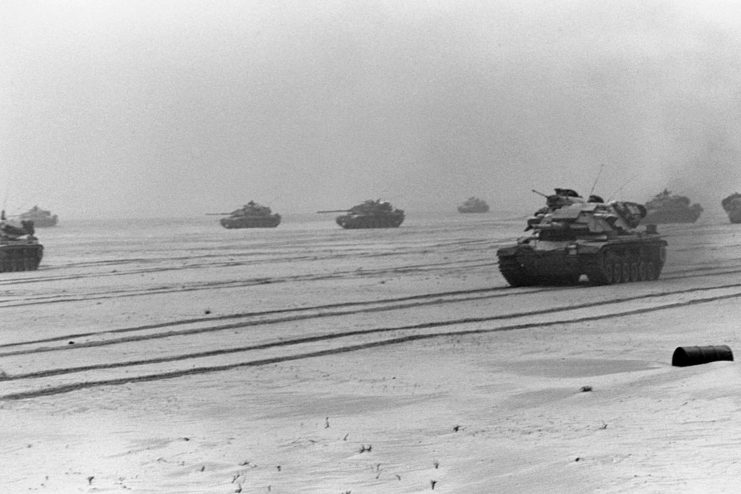
Today, the “Reveille Engagement,” which was part of the Battle of Kuwait International Airport, remains the largest tank battle in Marine Corps history. Despite the massive amount of troops that took part from both sides, it was still fought in rapid fashion.
While the fighting concluded at Kuwait International Airport, it began along the way to the airstrip. The 1st Marine Division had smashed through the Iraqi line, destroying over 250 T-55 and T-62 tanks, as well as 70 Soviet T-72s, manned by the Iraqi 3rd Armored Division. The 2nd Marine Division scattered the Iraqi forces by engaging them on the other side, taking additional tanks, as well as armored personnel carriers (APCs) and trucks.
The battle was a victory for the UN forces. The US lost 19 servicemen, and 11 tanks were either damaged or destroyed. The Iraqis, on the other hand, suffered hundreds of casualties and thousands of soldier were captured. In addition, hundreds of their tanks were destroyed.
The aftermath of the Battle of Kuwait International Airport
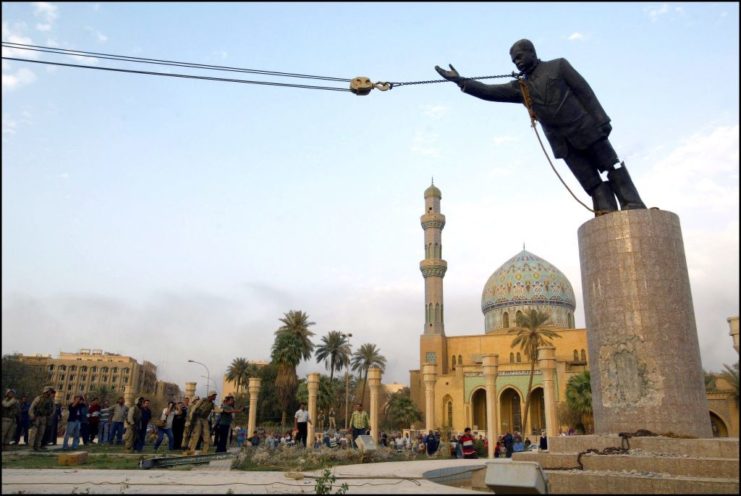
Like the Battle of Kuwait International Airport, the Gulf War was over very quickly. Just one day after the battle, the coalition was victorious and the Iraqis were driven out of Kuwait.
The war, however, had long-lasting consequences. During their retreat, the Iraqis set fire to hundreds of oil wells, which burned for months and resulted in the loss of six million barrels of oil a day. The fires also contributed to heavy pollution. Prior to the war’s conclusion, the UN Security Council had adopted Resolution 661, which placed severe sanctions on Iraq. During the 12 years it was enforced, many everyday Iraqis struggled with hyperinflation and malnutrition.
More from us: Operation Trent: The British Special Air Service’s Astonishing Daylight Mission in Afghanistan
Want War History Online‘s content sent directly to your inbox? Sign up for our newsletter here!
Most notably, tensions between Saddam Hussein and the US stayed at a fever pitch. They were relieved in 2006, when the former Iraqi leader was tried and executed.
